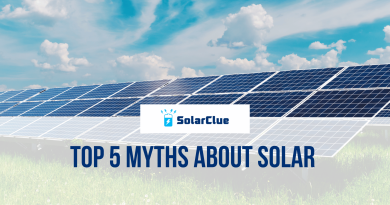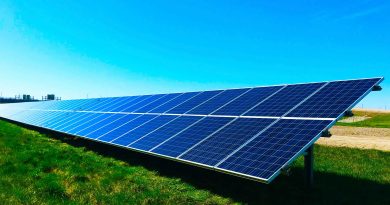How To Generate Power From Solar Panel?
Solar energy is a renewable, sustainable, and increasingly popular way to generate electricity for homes, businesses, and off-grid applications. This guide provides an in-depth overview of how solar panels work, the key components of a solar power system, and practical advice on installation, maintenance, and troubleshooting. Whether you’re considering a grid-tied system, an off-grid setup, or just curious about how solar power works, this guide has you covered.
Table of Contents
- 1 The Science Behind Solar Energy
- 2 Components of a Solar Power System
- 3 The Photovoltaic Effect and How It Works
- 4 Solar Panel Installation and Maintenance
- 5 Inverters and Their Role in Solar Power Systems
- 6 Battery Storage Options
- 7 Grid-Tied vs. Off-Grid Solar Systems
- 8 Maximizing Solar Energy Production
- 9 Troubleshooting Common Solar Panel Issues
- 10 The Future of Solar Power and Its Potential
- 11 Government Incentives and Subsidies for Solar Energy
- 12 Case Studies of Successful Solar Power Installations
- 13 Table: Comparison of Solar Panel Types
- 14 Conclusion
- 15 FAQ Section
The Science Behind Solar Energy
The Photovoltaic Effect:
- Definition: The photovoltaic effect is the process by which solar panels convert sunlight into electricity. It involves the excitation of electrons in a semiconductor material when exposed to light.
- How It Works:
- Photons and Electrons: When sunlight hits the solar cells within a panel, it knocks electrons loose from their atoms. These free electrons flow through the material to create an electric current.
- Electric Field: The structure of the solar cell creates an electric field, which directs the flow of electrons, generating a direct current (DC).
Components of a Solar Power System
1. Solar Panels:
- Types: Monocrystalline, polycrystalline, and thin-film solar panels.
- Function: Convert sunlight into direct current (DC) electricity through the photovoltaic effect.
2. Inverters:
- Types: String inverters, microinverters, and hybrid inverters.
- Function: Convert DC electricity from the solar panels into alternating current (AC), which is the standard form of electricity used in homes and businesses.
3. Batteries:
- Types: Lead-acid, AGM (Absorbent Glass Mat), and lithium-ion batteries.
- Function: Store excess energy generated by the solar panels for use during nighttime or cloudy days.
4. Charge Controller:
- Function: Regulates the voltage and current coming from the solar panels to prevent overcharging of the batteries.
5. Mounting Systems:
- Types: Roof-mounted, ground-mounted, and pole-mounted systems.
- Function: Secure the solar panels in place, ensuring they are positioned to maximize sunlight exposure.
The Photovoltaic Effect and How It Works
The Process:
- Sunlight Exposure: Solar panels are exposed to sunlight, which consists of photons—particles of light.
- Electron Excitation: These photons strike the semiconductor material (usually silicon) in the solar cells, knocking electrons loose.
- Electric Field: The design of the solar cell creates an electric field that pushes the free electrons into a flow, creating a current.
- DC Electricity Generation: The flow of electrons generates direct current (DC) electricity, which is collected by the wiring in the solar panel.
Solar Panel Installation and Maintenance
Installation:
- Site Assessment: Evaluate your location for solar potential, considering factors like roof orientation, shading, and available space.
- Mounting the Panels: Install the mounting system on the roof or ground, then secure the solar panels in place.
- Wiring: Connect the solar panels in series or parallel, depending on the desired voltage and current.
Maintenance:
- Cleaning: Regularly clean the panels to remove dirt, dust, and debris that can reduce efficiency.
- Inspection: Periodically inspect the panels and wiring for signs of wear, damage, or loose connections.
- Monitoring: Use a solar monitoring system to track energy production and detect any performance issues early.
Inverters and Their Role in Solar Power Systems
Types of Inverters:
- String Inverters: Convert DC to AC for a group of panels connected in series.
- Microinverters: Installed on each panel, converting DC to AC at the panel level, offering higher efficiency and reliability.
- Hybrid Inverters: Combine the functions of a string inverter with the ability to manage battery storage.
Functionality:
- DC to AC Conversion: The primary role of the inverter is to convert the DC electricity generated by the solar panels into AC electricity, which is used by most household appliances.
- Grid Synchronization: In grid-tied systems, the inverter synchronizes the AC output with the grid’s frequency and voltage.
Battery Storage Options
Types of Batteries:
- Lead-Acid: Traditional, cost-effective, but requires maintenance and has a shorter lifespan.
- AGM (Absorbent Glass Mat): Maintenance-free, more durable than lead-acid, but more expensive.
- Lithium-Ion: High efficiency, longer lifespan, lightweight, and requires minimal maintenance, but with a higher upfront cost.
Benefits of Battery Storage:
- Energy Independence: Store excess solar energy for use during nighttime or cloudy days.
- Backup Power: Provide backup power during grid outages.
- Off-Grid Applications: Essential for off-grid solar systems, enabling continuous power supply.
Grid-Tied vs. Off-Grid Solar Systems
Grid-Tied Systems:
- Connection: Remain connected to the utility grid, allowing you to draw power when solar production is low and export excess power to the grid.
- Net Metering: Earn credits for the excess energy you produce, reducing your electricity bills.
Off-Grid Systems:
- Independence: Completely independent of the grid, relying solely on solar panels and battery storage for electricity.
- Components: Typically require a larger battery bank and possibly a backup generator to ensure reliable power.
Maximizing Solar Energy Production
Optimal Placement:
- Tilt Angle: Adjust the tilt of the panels to match the latitude of your location, optimizing exposure to sunlight throughout the year.
- Orientation: Position panels to face south in the Northern Hemisphere or north in the Southern Hemisphere for maximum sun exposure.
Energy Efficiency:
- Use Energy-Efficient Appliances: Reduce overall energy consumption to maximize the effectiveness of your solar power system.
- Monitor and Maintain: Regularly monitor system performance and maintain components to prevent efficiency losses.
Troubleshooting Common Solar Panel Issues
Low Power Output:
- Shading: Check for shading from trees, buildings, or other obstructions.
- Dirty Panels: Clean the panels to remove dirt and debris that could be blocking sunlight.
- Faulty Connections: Inspect wiring and connections for loose or damaged components.
Inverter Issues:
- No Power Output: Ensure the inverter is properly connected, turned on, and within the correct voltage range.
- Error Messages: Consult the inverter manual for specific error codes and troubleshooting steps.
The Future of Solar Power and Its Potential
Emerging Technologies:
- Bifacial Panels: Panels that can capture sunlight from both sides, increasing overall efficiency.
- Perovskite Solar Cells: A new type of solar cell that promises higher efficiency and lower production costs.
Integration with Smart Grids:
- Smart Inverters: Future inverters will likely interact with the grid more intelligently, managing power flows, improving stability, and integrating with smart home systems.
Global Expansion:
- Rising Adoption: Solar energy is expected to become a dominant source of electricity worldwide as costs continue to fall and technology improves.
Government Incentives and Subsidies for Solar Energy
Subsidies:
- Central Government Subsidy: Up to a 40% subsidy for residential systems up to 3 kW in India.
- State-Level Incentives: Additional subsidies and incentives vary by state.
Tax Benefits:
- Income Tax Deductions: Under Section 80-IA of the Income Tax Act in India, tax deductions are available for profits and gains from solar power generation.
Net Metering:
- Credits for Excess Power: Sell excess power back to the grid, further reducing electricity costs.
Case Studies of Successful Solar Power Installations
Residential Installation:
- Location: Suburban home in California
- System Size: 5 kW grid-tied system
- Outcome: Significant reduction in electricity bills, with the homeowner earning credits through net metering.
Commercial Installation:
- Location: Manufacturing facility in Gujarat, India
- System Size: 100 kW rooftop installation
- Outcome: Lowered operational costs and contributed to the company’s sustainability goals.
Table: Comparison of Solar Panel Types
| Type | Efficiency | Cost | Durability | Best For |
|---|---|---|---|---|
| Monocrystalline | High (15-22%) | High | Long Lifespan | Limited roof space, high energy needs |
| Polycrystalline | Medium (13-18%) | Moderate | Moderate Lifespan | Budget-conscious installations |
| Thin-Film | Low (10-12%) | Low | Flexible, Lightweight | Portable setups, large areas |
Conclusion
Solar panels offer a reliable and sustainable way to generate electricity, whether you’re powering a home, a business, or an off-grid cabin. Understanding the components, installation process, and maintenance requirements of a solar power system will help you maximize its efficiency and longevity. As technology continues to evolve, solar energy is poised to play an even more significant role in the global energy landscape, supported by government incentives and increasing public awareness of its benefits.
FAQ Section
1. How do solar panels generate electricity?
Solar panels generate electricity through the photovoltaic effect, where sunlight knocks electrons loose in a semiconductor material, creating a flow of direct current (DC).
2. What components are needed for a solar power system?
The main components include solar panels, an inverter, batteries (optional), a charge controller, and mounting hardware.
3. What is the difference between grid-tied and off-grid solar systems?
Grid-tied systems are connected to the utility grid and can export excess power, while off-grid systems are entirely independent and rely on battery storage.
4. How do inverters work in a solar power system?
Inverters convert the direct current (DC) generated by the solar panels into alternating current (AC), which is used by household appliances.
5. What maintenance do solar panels require?
Solar panels require regular cleaning to remove dirt and debris, and periodic inspections to check for damage or loose connections.



